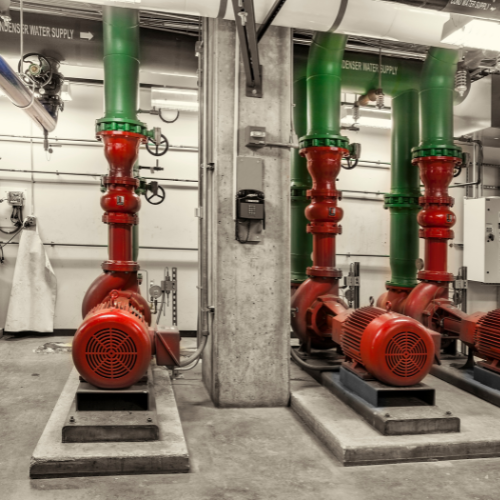Level II Energy Audit
A Level II energy audit involves a detailed examination of a building’s energy systems and aims to identify potential energy cost reduction, decarbonization and electrification opportunities.

Understanding Level II Energy Audits
WHAT IS A LEVEL II ENERGY AUDIT?
A Level II energy audit provides a detailed examination of a building’s characteristics that impact energy use. Think of it as a detailed investigation into your building’s energy habits. During this audit, our energy experts dive deep into the systems that keep your space comfortable, such as HVAC, lighting, and the building enclosure. The audit focuses on energy, environmental, and financial drivers to prioritize customized operational cost reduction opportunities.
This type of audit involves a class D estimate of energy efficiency and decarbonization measure costs, calculated energy savings and carbon reduction as well as a threshold of accuracy that instills the confidence our clients require to move forward with projects that ultimately achieve their operational and sustainability goals.

- Visual Site Inspection
- Detailed Utility Analysis
- Energy Consumption Overview and Benchmarking
- Quantitative Recommendations
- Detailed Report with Actionable strategies
Understanding Level II Energy Audits
WHAT IS A LEVEL II ENERGY AUDIT?
A Level II energy audit provides a detailed examination of a buildings characteristics that impact energy use. Think of it as a detailed investigation into your building’s energy habits. During this audit, our energy experts dive deep into the systems that keep your space comfortable, such as HVAC, lighting, and the building enclosure. The audit focuses on energy, environmental, and financial drivers to prioritize customized operation cost reduction opportunities.

- Visual Site Inspection
- Detailed Utility Analysis and Benchmarking
- Energy Consumption Overview
- Quantitative Recommendations
- Detailed Report with Actionable strategies
What Happens During the Audit?
1. Data Collection
Gather detailed information through on-site discussions and measurements, utility bill reviews, and equipment assessments.
2. Technical Analysis
Conduct a thorough examination of energy systems, including HVAC, lighting, and other components, to pinpoint inefficiencies and areas where energy can be saved. This step involves assessing equipment performance and identifying energy waste.
3. Cost-Benefit Analysis
Evaluate the cost-effectiveness of proposed energy-saving measures by estimating upfront costs, projected energy savings, and determining payback periods. This analysis helps prioritize recommendations based on their financial implications.
4. Recommendations & Reporting
Compile findings into a comprehensive report that outlines energy conservation measures, prioritizes recommendations, and provides a roadmap for improving energy efficiency. The report serves as a guide for stakeholders to make informed decisions about implementing measures that will enhance sustainability and reduce operational costs
What You'll Receive

Quantitative Findings
You'll receive an in-depth report from us, outlining the findings from our audit in a clear, concise manner. No Fluff.

Actionable Recommendations
The report will include specific, achievable steps that you can take to improve your building's energy efficiency. These recommendations are practical and designed to be easily implementable.

Cost-Benefit Analysis
We include a detailed analysis of the potential cost savings associated with each recommendation, helping you make informed decisions about your energy management strategies.

Sustainability Focus
Our recommendations are not just about cutting costs; they also focus on creating a more sustainable and environmentally friendly operational environment.
What Happens During the Audit?
1. Data Collection
Gather detailed information through on-site discussions and measurements, utility bill reviews, and equipment assessments.
2. Technical Analysis
Conduct a thorough examination of energy systems, including HVAC, lighting, and other components, to pinpoint inefficiencies and areas where energy can be saved. This step involves assessing equipment performance and identifying energy waste.
3. Cost-Benefit Analysis
Evaluate the cost-effectiveness of proposed energy-saving measures by estimating upfront costs, projected energy savings, and determining payback periods. This analysis helps prioritize recommendations based on their financial implications.
4. Recommendations and Reporting
Compile findings into a comprehensive report that outlines energy conservation measures, prioritizes recommendations, and provides a roadmap for improving energy efficiency. The report serves as a guide for stakeholders to make informed decisions about implementing measures that will enhance sustainability and reduce operational costs.
What You'll Receive

Quantitative Findings
You'll receive an in-depth report from us, outlining the findings from our audit in a clear, concise manner. No Fluff.

Actionable Recommendations
The report will include specific, achievable steps that you can take to improve your building's energy efficiency. These recommendations are practical and designed to be impactful.

Cost-Benefit Analysis
We include a detailed analysis of the potential cost savings associated with each recommendation, helping you make informed decisions about your energy management strategies.

Sustainability Focus
Our recommendations are not just about cutting costs; they also focus on creating a more sustainable and environmentally friendly operational environment.
Services
We are passionate about leading our clients towards a future where their assets are optimized for lasting success.
Serving Clients NATIONWIDE
Services
We are passionate about leading our clients towards a future where their assets are optimized for lasting success.
Company
Links
Company
Powered by Innovativearmy.com
